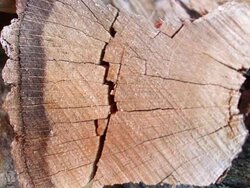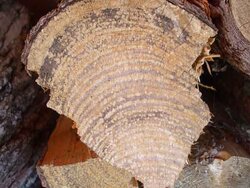I use one in the shop, and like most electronics, bought it when it was pretty spendy. For 30 bucks or so, I wouldn't lose much sleep. I've tried mine on firewood, but don't think it was really accurate. You would want to split a piece in half to read the core rather than the outside. If your wood is all from the same source, it is not likely that a few pieces would be much drier than others. A couple percentage points difference is not going to help.
Most wood will burn, fresh cut, if you give it enough air, don't expect much usable heat, or try to damper it down.
If you find a wood dealer with MANY cords of wood, you might be able to find some that is left over from last year, but a load at their choice, delivered, is not likely to be.
It takes some experience, but here are some indicators to look for:
Newer firewood has a fresh smell, older dryer wood, less.
-break off some loose splinters, dry wood will break off with a crack.
-rap the end on a hard surface, dry wood will have a ring tone, wet will be more like a thud
-look for cracks on the ends of the wood, hairline fine, short cracks tend to indicate fresher cut wood, look for full length cracks that reach from the center of the core to the bark. As moisture leaves wood, the wood shrinks and collapses, good cracks and plenty of them are a good indicator.
Compare the two pictures.
If you are comparing green wood to green wood, all this will help little, and you will be splitting hairs.
Obviously there are exceptions to these rules, as I'm sure somebody will point out, however if you combine them, you will have a pretty good idea what to look for.





